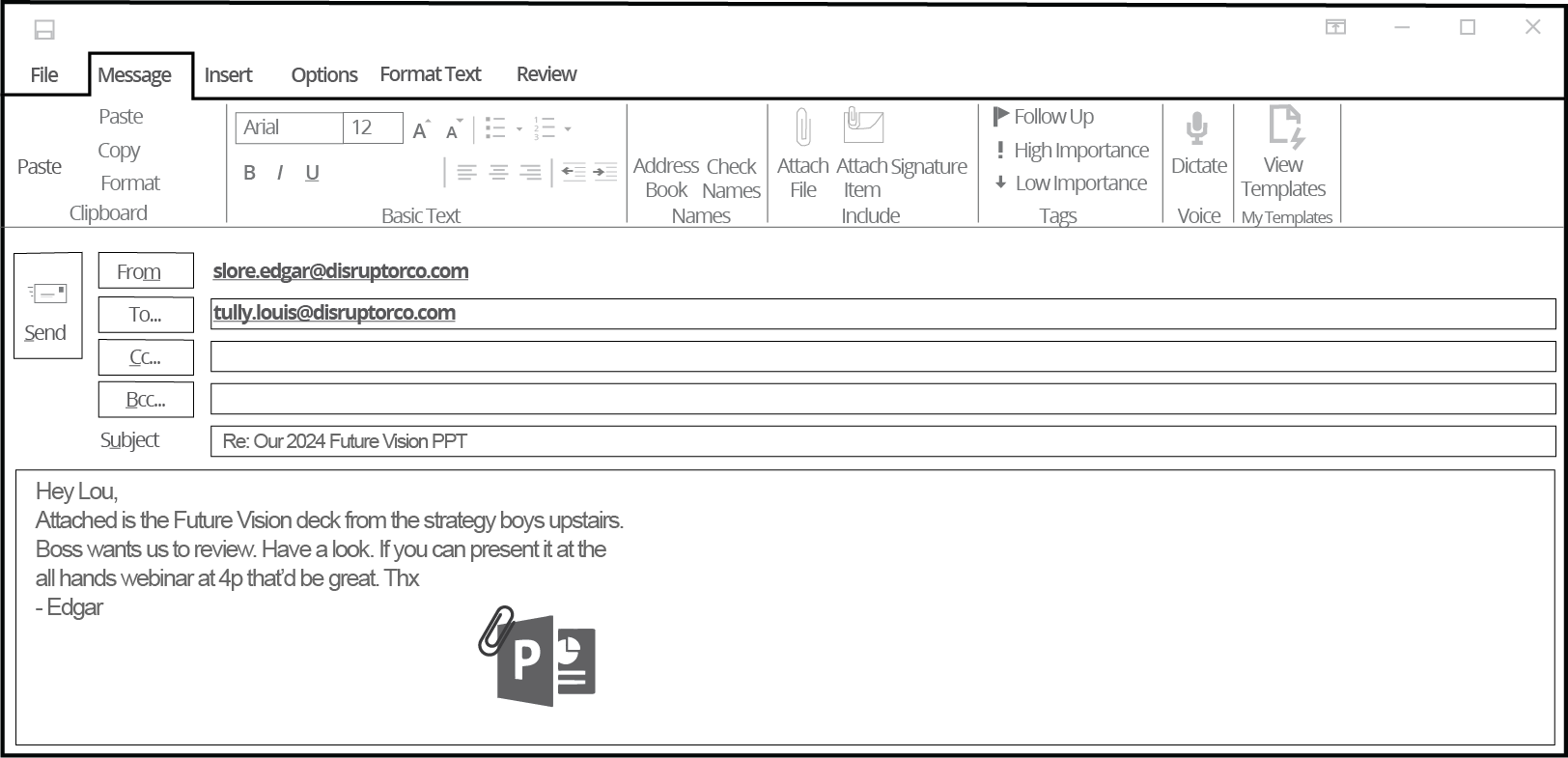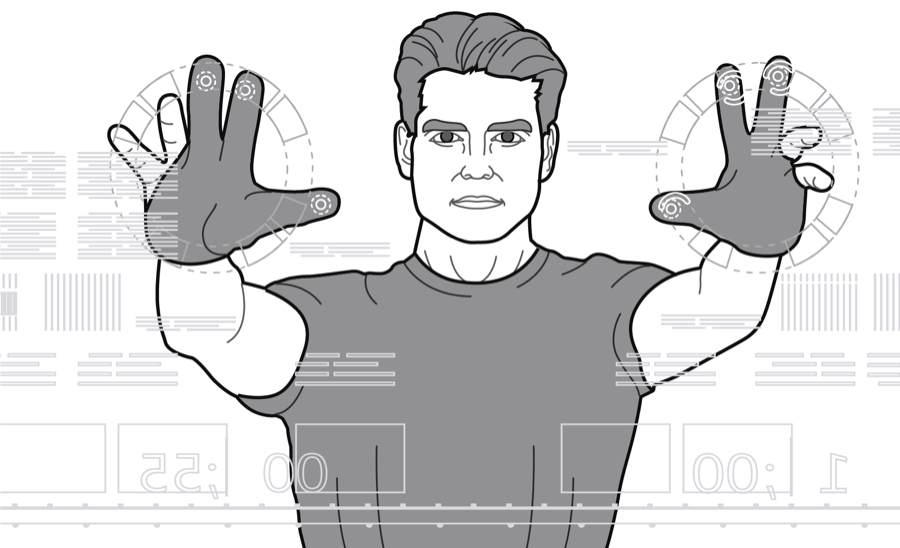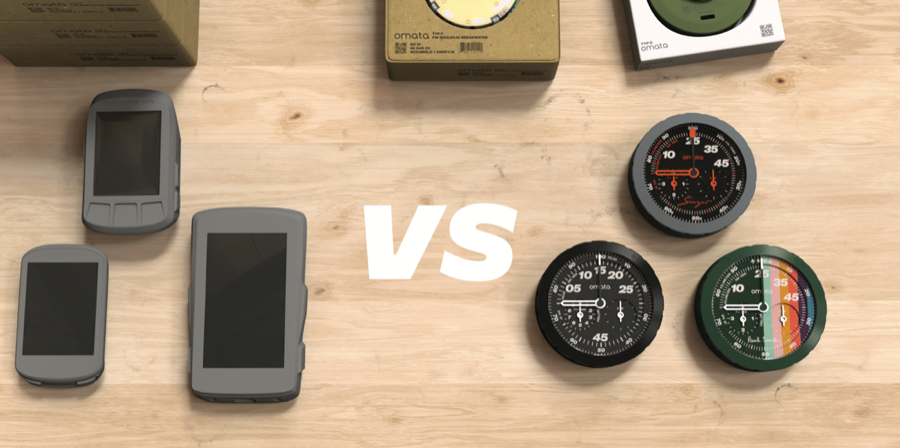
One - The Future As An Email Attachment
Have you ever gotten one of these emails? Where the future is zipped up into a PowerPoint deck and then sent around in an email with the expectation that the recipients will open and read it and then become excited about what they see?
If you’re in the corporate strategy racket you’ve probably received an expensive PowerPoint deck cobbled together by some analyst or McKinsey-like operation and trotted out as “predictions”.
It’ll quite likely be full of any number of speculative future or science fiction futures.
If you rendered these down to their essence, you’d likely have that one still from Minority Report (you know the one) and maybe something sinister-looking from Black Mirror. There’s almost certainly an illustration of the Gartner Hype Cycle, and quotes from some expert who seems to know with unnerving confidence about ‘the future of work after COVID’, ‘the future of autonomous vehicles’ (which Uber just seems to have punted on after spending billions to get a car to drive half a block..), or even everything about ‘what’s next’..

Besides film and the like, you might occasionally get a literary reference - Neuromancer, for example, and a reminder that William Gibson invented the term ‘cyberspace’ and said something about the future being already here, just not yet evenly distributed.
There’s something wrong going on here, and I’m not talking about the quality of these entertainment examples.
I’m not even objecting to those McKinsey-type analysts who charge you $50,000 for writing not much more than movie reviews of Minority Report or Black Mirror.
What’s wrong is that our future visions all look like “future visions” - and they probably shouldn’t because more often than not, those film futures are not worlds we want to live in. And even those impossibly slick corporate ‘visions of the future’ that get spread around during CES are austere to the point where they seem like no one except The Algorithm would want to live there.
So..what’s going on here?
Is it that we have lost our own ability to imagine in different ways? Is it just knee-jerk to borrow a screengrab or insight from a blockbuster film or Westworld? Does the future really just get made in a Hollywood basement?
There must be other ways, right?
Of course there is. If we were only limited to visions of the future that look like Hollywood we’d end up living in a flaming, apocolyptic cyberpunk dumpster in a grimey back alley all gesturing wildly in the air with head-mounted displays on. And none of us want that, really.
What I’m talking about is the primary motivation behind Design Fiction — the approach for discovering strategic futures that I developed way back in 2009.
Even before Design Fiction, I was intensely curious with the way fiction interacts with reality. My Ph.D. dissertation was on that topic and presciently titled ‘The Reality Effect of Technoscience’ where I looked at how science-fiction shapes our understanding of what’s possible, and how science-fact informs science-fiction.
If you stop to think about it, films like these anchor our expectations and align our collective imagination about the future remarkably well. The plain truth is that the kinds of films I mention above have a remarkable way of engaging and captivating us. Scenes and plots become reference points in conversations and mold our understanding of possibility. They align our expectations as to ‘what’s next’ - the result of remarkable creative energy that allows us to suspend our disbelief, if only for 146 minutes (or 166 minutes if you’re a Kubrick fan).
That’s all well and good for film and science-fiction fans. But what about us here? Folks like you and me who aren’t in the film business but are always looking for better ways to imagine big and share our ideas as effectively as possible?
Is there anything we can do with all of this science-fiction film stuff? Can we operationalize these insights so that the strategic futures we are often called upon to create have that same engaging, captivating, team-aligning and goal-orienting outcomes? And is it possible without going to film school or dusting off the old Underwood 450 and having a go at writing a novel?
Of course we can, and this is one of the things I want to describe in this newsletter series.
Next time I’ll write about why future visions all end up looking like “future visions” and how something we call the Design Fiction ‘archetype’ can help craft better, more vivid and compelling representations of the future. This will set us on the path towards understanding how Design Fiction helps represent your vision, align goals and teams, set expectations, and ultimately help craft a plan for obtaining better futures.
Two - Design Fiction in Practice

Many of you will know that I have another company called OMATA, which makes what I originally thought of as a counterfactual product, because it assumed something that would exist under circumstances in which it makes perfectly good sense.
But sense making has a way of being inflexible so when you take an existing archetype - say, a cycling computer - and take away the corners and replace the digital screen with a mechanical movement, you sorta violate common sense.
One moment, it’s a sports tracker for cycling that looks like a retro analog speedometer.
In the next moment, it’s a futuristic hybrid analog-digital device that challenges one to look at alternative possibilities - for example, that the archetype of a computer can be something without corners.
And then the moment after that, it’s making someone do a double-take, intrigued by the alluring character of an aviation-inspired instrument that seems to mean business..of some sort.
The ‘counterfactualness’ of it comes with a whiff of Design Fiction. Frankly, early on in the endeavor I wondered what would a high-tech cycling sports tracker be if we lived in a world where analog and mechanical were as much a part our device world as digital and networked.
Before OMATA, cycling computers were sort of brooding rectangles with screens. They listed as a feature the ability to alert you to receiving a phone call or text message. They included maps and the like. They were digital geegaws made of plastic and manufactured to be as cheap as possible.
I wondered what I could get away with and still call OMATA a cycling computer. How much could be stripped away and refined to the point where people would recognize that it was a desirable ‘feature’ to have less, rather than more.
Design Fiction is perfectly suited to asking these kinds of “what if..” questions. And, honestly, that’s what intrigued me the most about OMATA. (And then things got a bit out of control and I founded a company. But that’s for a future edition of the newsletter.)
I continue to treat the endeavor like a very serious Design Fiction on occasion, even to the point of formulating the future vision in the form of an Annual Report for (from?) the year 2024.
I’ll have more to say in forthcoming newsletters about OMATA and the ways I’ve used Design Fiction to imagine the future vision for OMATA, design the product portfolio, and allow myself to be open to taking unanticipated strategic turns where outcomes to Design Fiction explorations yield beautiful unexpected possibilities.
This being the first dispatch of a newsletter in an age when everyone has a newsletter, I want to offer a bit of an editorial aside.
I’ve been pondering a newsletter for about 17 years. What has held me back is a topic. I thought a newsletter should have a topic. But, there were too many topics in and around the things in and around my professional interests. Finally a good friend of mine said that it was all worthy of a newsletter and I shouldn’t worry if the newsletter did not have a singular focus. Rather, he said, the topic of interest is you and your interests.
So, although this newsletter is called Design Fiction, you can expect quite a bit in and around that and trust that it all links together in some form or fashion. So — I just wanted to say that at the outset